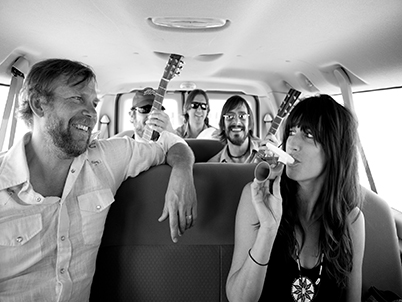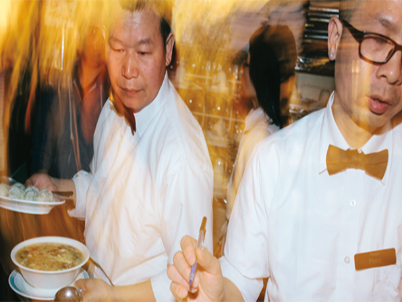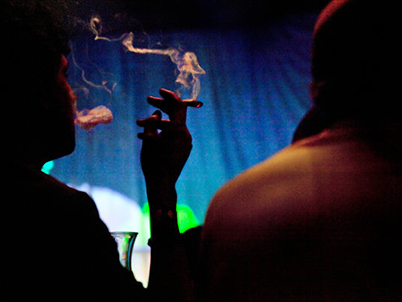Sunset’s Best Cabin Getaways
Sierra National Forest, California
Far Meadow
Yosemite may be only 12 miles away, but Far Meadow’s Base Camp, in some ways, trumps the iconic park. No valley floor swarmed with bus tours or crowded cafeterias—just you, your friends, and family tucked into a 750-square-foot pine cabin, with 5 glorious High Sierra acres all to yourselves. The Base Camp cabin—undamaged by this summer’s Rim Fire, which actually stopped 100 miles north—was remodeled in 2013, with the addition of a second bedroom and French doors that open onto the deck. In autumn, you’ll find the kind of Technicolor fall foliage that’ll make you think you’ve landed in New England. A bit farther east, above Bass Lake (and the snow line), Far Meadow maintains five additional properties in the Sierra National Forest: a new A-frame was added this season alongside a log cabin, two outfitted trailers, and another A-frame. From late May to November, you can swim, fish, and hike your heart out. After that, these five solar-powered accommodations remain open, but getting there gets more complicated. In winter, after the road closes, they’re accessible only by snowmobile or snowcat, and guides will take only the adventurous in—to cross-country ski, snowshoe, make snow angels—with a friendly reminder to stay safe. As manager Kris Roni puts it, “This is the High Sierra, and we are, always, at the whims of nature.”
Best time to go: November if you’re adventurous, or June for the Sierra’s sunny, clear-sky days.
From $220; far-meadow.com
Dolores, Colorado
Dunton Hot Springs
Log onto Dunton’s live web cam and the scene looks straight out of the 1800s: a cluster of hand-hewn Lincoln Log-like cabins scattered across a meadow at the foot of the towering San Juan Mountains—a tipi here; a wagon wheel there; steamy natural hot springs everywhere. But if you actually make the trek to this restored ghost town in remote Southwestern Colorado, you’ll find full on 21st luxury. The kind of riverfront “rusticity” that runs you a thousand dollars a night, where both fly-fishing and reflexology are fair game, and the “Saloon” is more like a local, gamey French Laundry. (Slow-roasted elk tenderloin, anyone?) Though Dunton recently erected eight canvas tents in its new Cresto Ranch, four miles downriver, its 12 cabins, originally built out of aspen and cottonwood in 1885, have been sought-after escapes since 2001, when they reopened with outdoor rainshowers, ready-to-light fireplaces, and Rajasthan wedding beds. Couples come from all over the world to hike and ride horseback— and amble around in robes in between 107-degree soaks, as the odd elk or moose or black bear stroll by. Before falling asleep to the sounds of silence; so quiet that at least one city slicker had to download a white noise app on his iPad. Dunton ain’t cheap, but as one guests said, “Three days with the love of my life was worth every penny.” From $600, duntonhotsprings.com, 877/228-4674
Best time to visit: Right about now, rates are lower and, of course, the water’s warm… .
Big Sur, California
Glen Oaks Big Sur
Let the luxury hotels on Big Sur’s dramatic coastline have all the glory— in-the-know Highway 1-road-trippers would rather keep Glen Oaks to themselves. (Though, says the manager, it’s already poached a few Post Ranch and Ventana guests who’ve realized they can spa and sup, but save a significant amount by sleeping here instead.) What this 1957 adobe motor lodge-turned eco-mod retreat lacks in sparkling ocean views, it makes up for with the kind of rare, woodsy quiet that only comes from cozying up under a Pendelton wool blanket, by the crackling fire, beneath 300-feet-tall, thousand-year-old redwood trees. With radiant heat floors and cast iron stoves and ready-to-go-s’mores—it’s a little too easy to hunker down instead of hike. The new Roadhouse restaurant is just steps away too, which means you can feast on grass-fed steak and stumble back to your bed, instead of cooking in your (albeit cute) kitchenette. The main lodge has 16 rooms, but it’s the seven renovated cabins and two cottages along the babbling Big Sur River that are the most coveted. None more so than the Big Sur Cabin, with a private patio, outdoor fire pit —and two side-by-side clawfoot soaking tubs, under the stars. (Though, really, you kind of only need one.) From $275, glenoaksbigsur.com, 831/667-2105
Best time to visit: September and October aka Big Sur’s summer. But if you actually want to score a cabin, winter’s your best bet.
Pioneertown, California
Rim Rock Ranch Cabins
Surrounded by nothing but tumbleweed, cacti, and the twisted trunks of Joshua Tree National Park, this 10-acre retreat with four knotty-pine cabins (and one new rustic-mod ranch house) is all about the stars. Yes, Hollywood celebs like Gene Autry and Roy Rogers, who used to hole up here, in Pioneertown, in the ‘50s, but we’re also talking galaxies, smeared across the expansive, dark desert sky. Which you can gaze at from your Adirondack chair, warmed by the fire pit on your private patio that proprietor-musician Jim Austin stocks with wood. (Want to get even closer? There’s an actual star observation deck.) This is the desert, which means daytime is all about sunshine, hammocks, BBQ pits, and the “cowboy plunge pool.” Built in 1947, with dated (but fully functional) kitchenettes and actual VCR collections, the cabins are decorated in vintage “desert eclectica” — as is the entire landscape. Austin considers Rim Rock his ongoing art project, where repeat guests see something new every few months. Say, an 18-ton rock heart for weddings or a bunch of antique skeleton keys dangling from a tree. As Yelper Jennifer A. puts it, in all caps: “This place is NOT for the resort types, people looking for a giant in-ground pool and spa.” Indeed, Rim Rock is a far cry from the Four Seasons. Which is, exactly, the point.
From $118, rimrockranchcabins.com, 730/369-3012
Best time to visit: Early spring, when the desert wildflowers bloom.






